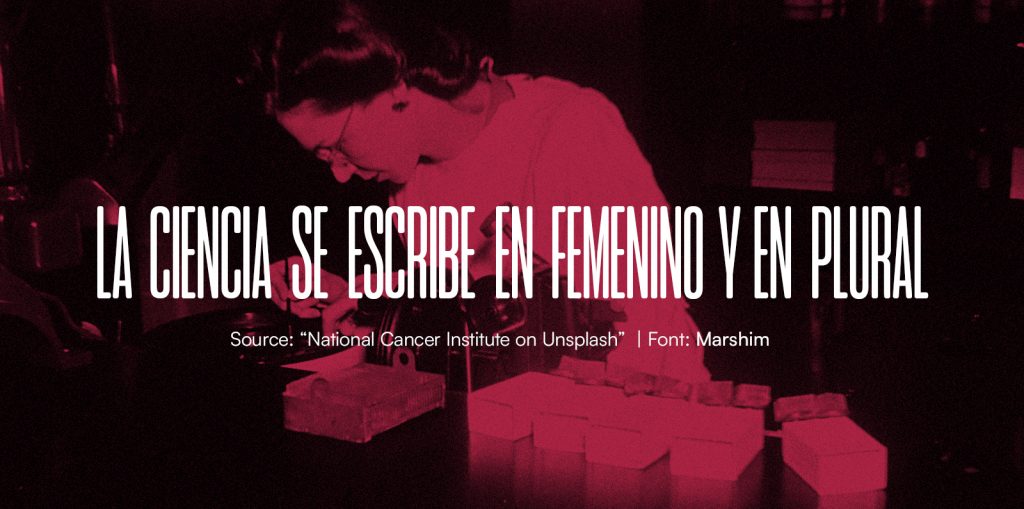A year ago, we published a post on the importance of the inclusion of women in STEM careers. This year, we want to show that science is written in feminine and plural, by telling you more about the women who have made significant contributions to the world through science.
Today, we bring you a small selection of women from the book “Women in Science: 50 Fearless Pioneers Who Changed the World” written and illustrated by Rachel Ignotofsky. In it, you can find the stories of a total of 50 women, taking a journey through their lives and accomplishments. Additionally, the book features fantastic illustrations, making it a favorite on your bookshelf.
Ada Lovelace (1815-1852)
She started her journey as the daughter of a prestigious mathematician who educated her in the field. Ada described herself as a poetic scientist (her father was a poet). She was the author of one of the most important documents in computing and designedprogram in history, inspired by the punched cards used in mechanical looms.
Marie Curie (1867-1934)
A pioneering physicist and chemist who conducted groundbreaking research on radioactivity and became the first woman to earn a doctorate in France. She discovered two elements, polonium and radium. In addition to these achievements, she won two Nobel Prizes and coined the term “radioactivity.” She literally gave her life to science.
Lise Meitner (1878-1968)
A Jewish physicist who discovered and explained the process of nuclear fission, with the element meitnerium named in her honor. During her life, she had interactions with other notable figures, including meeting Albert Einstein and dining with President Truman as Woman of the Year. Due to her Jewish heritage, she escaped Nazi Germany with the help of physicist Niels Bohr.
Rita Levi-Montalcini (1909-2012)
Rita was an Italian neurologist and senator who won the Nobel Prize in Physiology and Medicine for discovering nerve growth factor. Her love for her work led her to continue working until she passed away at the age of 103. She was named a member of the Pontifical Academy of Sciences by Pope Paul VI, and, breaking tradition, he shook her hand instead of kissing it.
Katherine Johnson (1918-2020)
This woman has been previously mentioned in our post on women in STEM due to her mention in the “Highlight the Remarkable” campaign by Stabilo. She was an American physicist and mathematician who calculated the flight path for the first crewed mission to the moon. Her role at NASA was essential, and she helped write the first manual on space travel.
Rosalind Franklin (1920-1958)
Ignoring her father’s advice, she went to university and became a chemist and X-ray crystallographer. She answered one of the major questions of her time: What does DNA look like? She discovered the double helix structure of DNA and played a crucial role in understanding the molecular structures of DNA, RNA, viruses, coal, and graphite.
Science is written in feminine and plural in Spain too
If you’ve made it this far, you might be wondering about women in Spain. We want to provide some information about a selection of our favorite Spanish women scientists:
Angela Ruiz Robles (1895-1975)
A teacher, writer, and inventor. She created a mechanical encyclopedia (1949), which could be considered the world’s first e-book. Her invention aimed to reduce the weight students carried to school and make their education more complete and attractive. She received numerous awards for her idea but couldn’t find any interested companies in Spain to manufacture it.
Jimena Fernández de la Vega (1895-1984)
A medical doctor, geneticist, and professor. She served as the director of the Section of Genetics and Constitution at the Faculty of Medicine in Madrid and was named Scientist of the Year in 2021 by the Royal Academy of Sciences. Together with her sister, they were the first Galician women to attend university, and they received the Grand Cross of Alfonso XII due to their academic achievements.
Ángeles Alvariño González (1916-2005)
An oceanographer, zoologist, and professor. She was the first woman scientist aboard an oceanographic ship and discovered 22 species of marine organisms. She was the first female researcher honored on the Day of Science in Galicia. In 1977, she raised the issue of gender discrimination in her workplace, becoming a pioneer in defending women’s labor rights. After her death, she left a manuscript about birds and other marine animals she encountered and studied during the Malaspina expedition. Her legacy continues through her daughter, who, in 2011, collaborated with the A Coruña City Council’s culture department to create a scientific library with a thousand books, maps, drawings, engravings, and correspondence with scientists from around the world.
Margarita Salas (1938-2019)
A Spanish biochemist who was the first woman to receive the Echegaray Medal awarded by the Royal Academy of Exact, Physical, and Natural Sciences. She dedicated her entire career to studying DNA polymerase, an enzyme with numerous applications in medicine, biotechnology, and criminology, such as the PCR technique used to determine coronavirus infections.
Do you now realize the importance of the discoveries made by these women? There are many more to discover. We encourage you to read the full book “Women in Science: 50 Fearless Pioneers Who Changed the World.” Now, do you also think that science is written in feminine and plural?
It’s essential to continue promoting gender inclusion in STEM careers. Who knows which women we’ll feature in a version of this post in 50 years? Perhaps you could be one of them?




